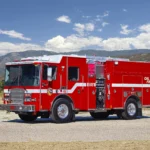
The jeepney is a unique mode of transportation that originated in the Philippines after World War II, when US military jeeps were left behind and repurposed for civilian use. The first jeepneys were created by modifying surplus military jeeps and adding metal roofs, benches, and brightly painted decorations. The jeepney’s design has remained relatively unchanged since its inception, with only minor modifications to improve safety and comfort. Today, jeepneys are an iconic symbol of Philippine culture and are widely used for public transportation.
The term “jeepney” is a combination of “jeep” and “jitney,” which was a term used to describe small, privately operated buses in the US in the early 20th century. Jeepneys were originally used to transport goods and people between towns and cities in the Philippines, but they quickly became a popular form of public transportation in urban areas. Today, jeepneys are ubiquitous in the Philippines and are often crowded with passengers during peak hours. The jeepney’s colorful designs and decorations are a reflection of Philippine culture and identity.
Jeepneys are known for their distinctive and colorful designs, which often feature religious icons, pop culture references, and political slogans. These designs are created by hand, with many jeepney drivers hiring artists to paint their vehicles. The colorful designs are a reflection of Philippine culture and identity, and are often used to express political and social messages. Despite their popularity and cultural significance, jeepneys have come under scrutiny in recent years due to their high emissions and poor air quality.
Jeepneys are a common form of public transportation in the Philippines, particularly in urban areas. They are typically operated by a driver and a fare collector, who sits near the entrance and collects payment from passengers. The fare for a jeepney ride is usually between 9 and 12 Philippine pesos (equivalent to around $0.18 to $0.24 USD), making them an affordable option for many Filipinos. However, the low fare also means that jeepney drivers and operators have very little room for profit.
There are estimated to be around 170,000 jeepneys in operation in the Philippines. Many of these vehicles are old and poorly maintained, which has led to concerns about their safety and environmental impact. In recent years, the Philippine government has proposed a phase-out of older jeepneys in favor of more modern and environmentally friendly models. This has been met with resistance from jeepney drivers and operators, who argue that the phase-out would have a negative impact on their livelihoods.
Jeepneys have been criticized for their poor air quality and high emissions, which contribute to air pollution and climate change. The Philippine government has proposed a phase-out of older jeepneys in order to address these concerns. However, jeepney drivers and operators have expressed concerns that the cost of upgrading to newer, more environmentally friendly models would be too high. There is also concern that the phase-out would lead to job losses and a decrease in the accessibility of public transportation in some areas.
In recent years, the Philippine government has proposed a phase-out of older jeepneys in favor of more modern and environmentally friendly models. The proposed phase-out has been met with resistance from jeepney drivers and operators, who argue that it would have a negative impact on their livelihoods. Some critics have also argued that the phase-out would lead to a decrease in the accessibility of public transportation, particularly in rural areas where jeepneys are often the only available form of transportation.
Jeepneys have become a symbol of Philippine culture and identity, and are often featured in tourism campaigns and advertisements. Many tourists are drawn to the colorful and unique designs of the vehicles, and some even choose to ride in jeepneys as a way of experiencing Philippine culture. However, there is also concern that the poor maintenance and safety standards of some jeepneys could put tourists at risk. Despite these concerns, jeepneys remain a popular and important mode of transportation in the Philippines, and are likely to remain a fixture of Philippine culture for years to come.
Jeepneys have also played a role in Philippine politics and social movements. During the Marcos regime in the 1970s and 80s, jeepneys were used to transport activists and protesters to rallies and demonstrations. The colorful designs of the vehicles were also used to express political messages and slogans. Today, jeepneys continue to be used as a means of political expression, with many drivers and operators using their vehicles to display support for particular political candidates or causes.
Jeepneys have been featured in numerous Philippine movies, TV shows, and music videos. They have become an iconic part of Philippine pop culture and are often used as a visual shorthand for “Philippine-ness” in media. Some movies and TV shows have even been set entirely on jeepneys, showcasing their importance in Philippine daily life.
The design of the jeepney has remained relatively unchanged since its inception, with only minor modifications made over the years. One notable exception was the introduction of the Sarao jeepney in the 1950s, which featured a longer and wider body than previous models. The Sarao jeepney quickly became popular and remains a common sight on Philippine roads today.
Jeepneys have also been used for commercial purposes, such as advertising and mobile shops. Some jeepney drivers have converted their vehicles into mobile stores, selling everything from snacks to clothing to electronics. Other drivers have used their jeepneys as mobile billboards, renting out advertising space on the sides and backs of their vehicles.
The jeepney has become a cultural icon in the Philippines, and is often featured in art and literature. It has been the subject of numerous poems, songs, and paintings, with artists and writers using the vehicle as a symbol of Philippine identity and culture. The jeepney has also been featured in several Philippine stamps and coins over the years.
Jeepneys have become an important part of Philippine tourism, with many tourists choosing to ride them as a way of experiencing local culture. Some tour operators even offer “jeepney tours” that take visitors on a ride through local markets and neighborhoods. The popularity of jeepneys among tourists has led some operators to create more luxurious and comfortable versions of the vehicles, with air conditioning and other amenities.
Despite the iconic status of the jeepney in Philippine culture, the vehicles have faced criticism for their poor safety record. In 2017, the Philippine government announced plans to implement new safety standards for jeepneys, including the installation of seat belts, speed limiters, and other safety features. However, some drivers and operators have expressed concerns that the cost of implementing these changes would be too high.
The jeepney has been the subject of numerous academic studies and research projects, exploring everything from its cultural significance to its environmental impact. Some researchers have even proposed using jeepneys as a means of reducing traffic congestion and air pollution in Philippine cities, by replacing single-occupancy cars with shared jeepney rides.
Jeepneys have also played a role in disaster relief efforts in the Philippines. During typhoons and other natural disasters, jeepneys have been used to transport people and supplies to affected areas. Some jeepney drivers have even volunteered their vehicles as makeshift ambulances during emergencies.
Jeepneys have become a popular subject for photographers and filmmakers, with many documentaries and photo essays focused on the vehicles and their role in Philippine culture. The unique and colorful designs of the jeepneys make them a visually interesting subject, while their ubiquitous presence in Philippine daily life makes them an important cultural touchstone.
Jeepneys have inspired similar modes of transportation in other countries. In Indonesia, for example, there are similar vehicles known as “bemo” that are used as a form of public transportation. These vehicles are also known for their colorful designs and customization.
The jeepney industry is a significant source of employment in the Philippines, providing jobs for drivers, mechanics, and other workers. Some estimates suggest that there are over 300,000 jeepney drivers in the country, and that the industry employs millions of people overall.
Jeepneys have also become a popular subject for merchandise and souvenirs. Visitors to the Philippines can purchase miniature jeepney models, t-shirts, and other items featuring the iconic vehicles. The popularity of jeepney-themed merchandise is a testament to the cultural significance of the vehicles in Philippine society.
Jeepneys have also been used to promote tourism in the Philippines, with some operators offering guided tours of local attractions and landmarks. These tours typically involve riding in a brightly colored jeepney and visiting sites such as historical landmarks, museums, and markets.
The jeepney industry has faced numerous challenges in recent years, including rising fuel costs, competition from ride-sharing apps, and concerns about safety and environmental impact. Despite these challenges, jeepneys remain a popular and important mode of transportation in the Philippines.
Jeepneys have also played a role in disaster preparedness efforts in the Philippines. Some organizations have used jeepneys as part of their disaster preparedness plans, equipping the vehicles with emergency supplies and using them as mobile command centers during emergencies.
The jeepney has become a symbol of resilience and ingenuity in the Philippines, reflecting the country’s ability to adapt and innovate in the face of challenges. Despite the many challenges facing the jeepney industry, the vehicles remain a beloved and iconic part of Philippine culture, and are likely to remain so for generations to come.









